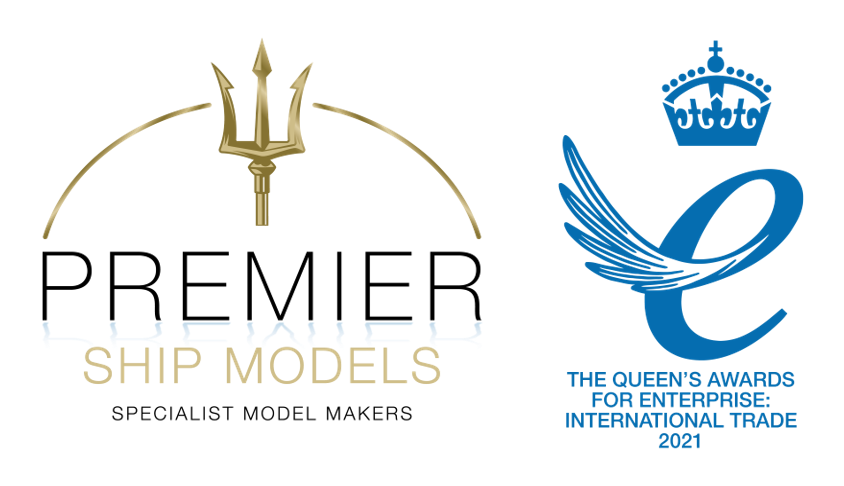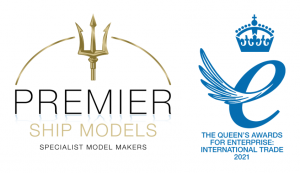This project was completed for a private client, and so we cannot mention them by name. However, we can talk about the model.
Midway through 2023, we were tasked with building a Naval Frigate model. It was a Flamingo Class Contingency Production Frigate, and was to be external only, complete in full colour with appropriately scaled surface-to-air missile launchers, a Phalanx, propulsion pods and a main calibre cannon towards the front.
The model measures in at a scale of 1:300.
The main dimensions are:
- Length: 49 centimetres
- Width: 12 centimetres
- Height: 18 centimetres
As stated above, this project was conducted on behalf of a private client, and so we cannot go into detail. They were, however, been immensely impressed throughout the entire process, and it was a pleasure to work with them and help bring their vision to life.
The model was to be 3D printed, and it measured 49 centimetres in length (excluding the base).
In terms of materials used, the model was solely constructed from ABS resin, with timber for the base and an acrylic case.
3D-printing is an incredibly complex profession. It requires you to understand three main things:
- The material
- The printer
- The methodology of the piece and your desired end result
The entire process is extremely specialist. Our off-site 3D-printing agent focuses on two skillsets when constructing models: creating the model in a digital manner and readying it for printing, and the separate skillset to take the parts from the printer and get them to a professionally high-standard.
Our custom projects always start with liaising with the client as closely as possible, to ensure we bring their vision to life. We strive to be as transparent as possible, allowing the client to see the progress of their order. This also includes agreeing on things such as delivery time and payment terms.
As the model was to be 3D printed, an initial digital render needed to be made. The model was made of high-precision photosensitive resin, acrylic and timber, and we utilised 3D simulation modelling, as well as laser-cutting.
For the sake of efficiency, production is temporarily paused, so the client can sign-off on the digital render. Once this is done, production can continue. This is treated with a great deal of urgency, to save time and resources, and streamline efficiency.
One of the trickiest stages is converting the digital render into a file that is compatible with the 3D-printer, and so certain software has to be used to achieve this. Before this is done, the render itself is split into chunks – which are actual parts of the model (albeit digitalised) – and accordingly named and saved where appropriate. After this, another piece of software is used to ensure the parts are ready to be printed; making sure they’re of the right scale, are sturdy enough and watertight.
When the render is ready, it can be printed via laser-cutting, and then building can begin. The construction itself is obviously the hands-on section, where specialists are required. It is known as the ‘finishing.’ The hull of any traditional model (i.e. not a futuristic or conceptual design) is normally split into three pieces, and they will each have joints. These joints were glued together and then left to dry, before additional features could be added. However, the hull is painted before any more pieces are added, and this protects the viscosity of the glue, ensuring the model remains rigid and has no chance of falling apart.
Whilst the construction of the hull is happening, our 3D-modeller will also focus on laying out all of the smaller pieces, cleaning them and then painting them individually.
Throughout the entire process, photos and renders were frequently sent to the client to ensure they were happy with the progress, and any feedback was welcomed and subsequently incorporated.
The Naval Frigate model was finished on schedule, and to a wonderful degree of quality. 3D printing went smoothly, without any setbacks, and the client was kept informed via production notes, images and renders being frequently sent their way.
Premier Ship Models is thrilled with another successful custom ship model project under our belts, and more importantly the client was left extremely satisfied with their purchase!
We’re excited to move on to new projects now, and couldn’t be more pleased with how this one turned out!
Commission your own model
If you would like to have your own bespoke model built, please complete the contact form below.


